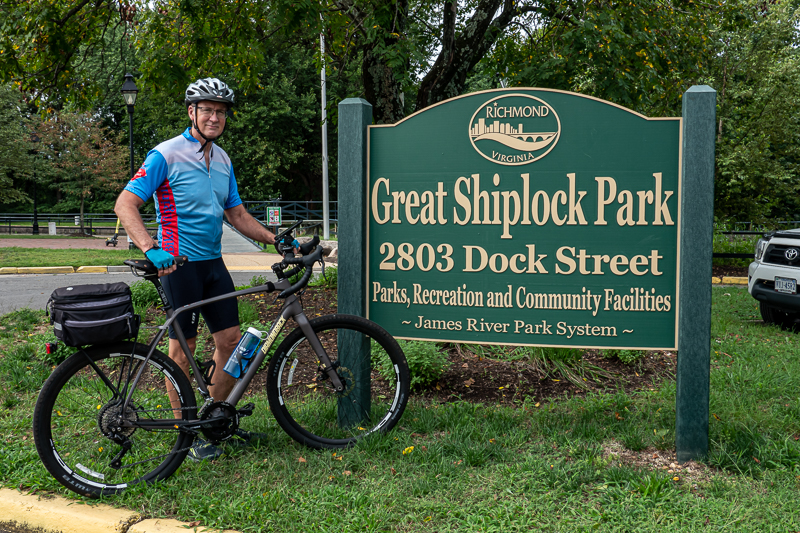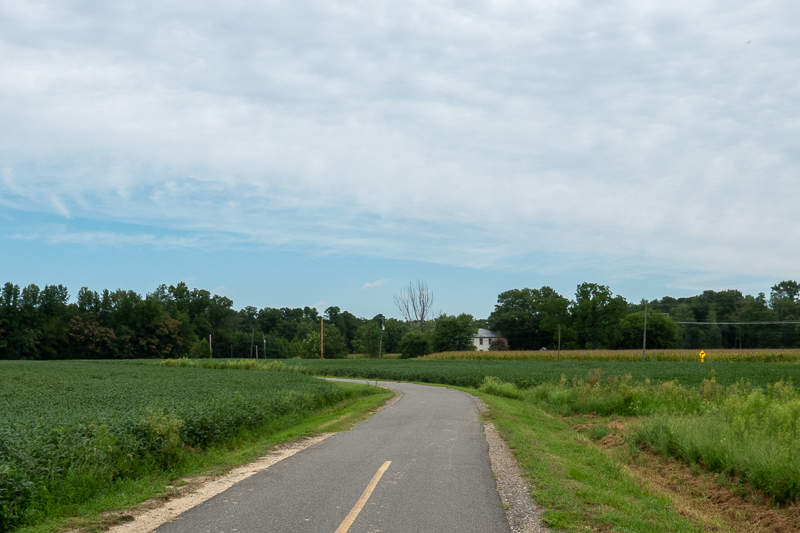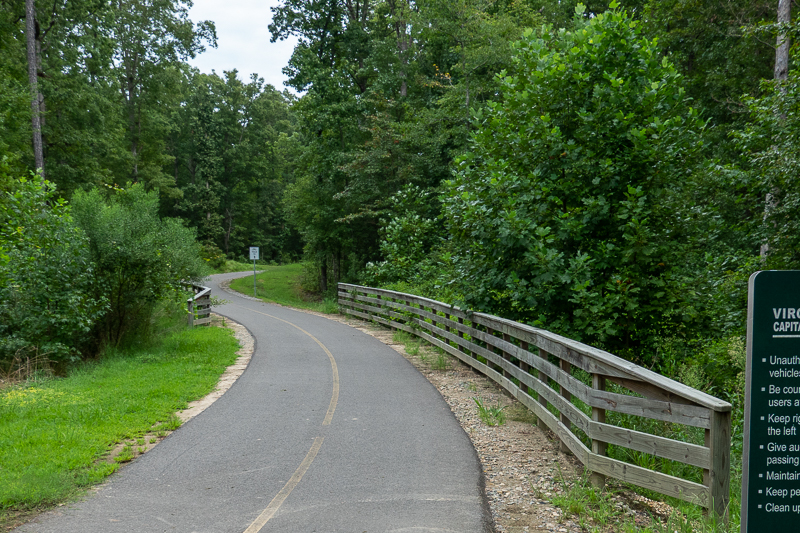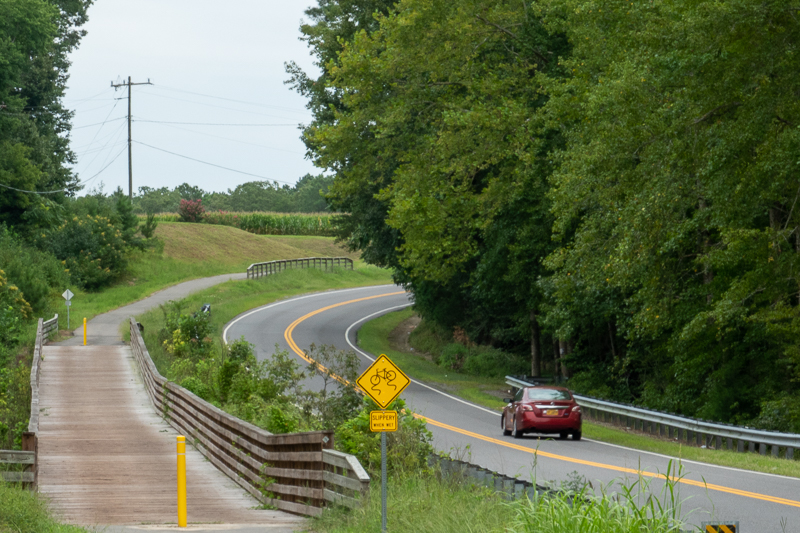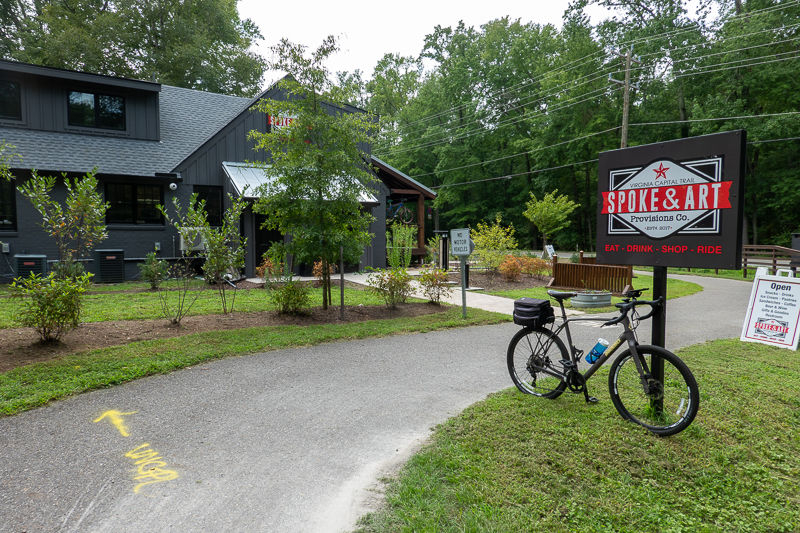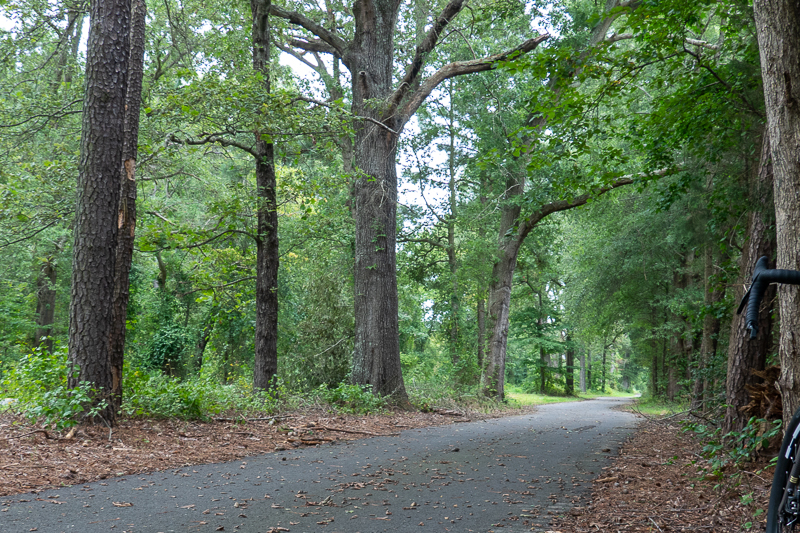
Virginia Capital Trail
In the ’50s my parents gave me one-speed Schwinn. Which I still own!
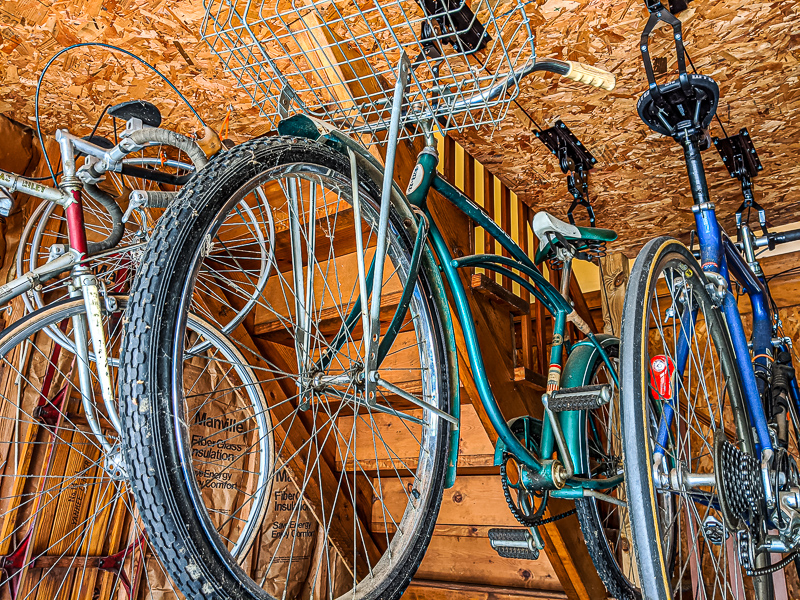
In the early ’70s, at the age of 23, I rode a three-speed Dunelt from Midlothian to Williamsburg (about 65 miles) and back over a three day weekend. Since then I have ridden probably 20,000 miles on club rides, day rides, commutes, a bike camping tour around Europe for a month in 1976, thirteen Bike Virginias, several century (100 mile) rides, two one-week bike camping tours around Virginia, and a 3,500-mile cross country tour from Newport News to San Diego in 1980.
Being an average non-athlete, I was never fast nor could I ride long distances, but I thought bicycling would be a lifetime hobby. As I entered my 60s though riding became difficult. I gave up Bike Virginia partly because of my legs but also because UMW required my presence at summer orientation the same week in June each year.
As it turns out, COVID-19, was a gift to me. It kept me home instead of traveling all the time. I started riding regularly but still my legs didn’t cooperate. Bummer.
Greg Lemond, winner of the Tour de France three times and probably the best American cyclist ever, was forced to retire from competitive cycling speculating that he had “mitochondrial myopathy” (and lingering problems following a shooting accident). He drastically lost his ability to keep up with the other riders.
Mitochondria are energy-producing organelles in our cells. If they aren’t working well, the tissue—brain, heart, muscle, liver, etc.—doesn’t work well. As an aside, one theory of Alzheimer’s Disease is mitochondrial failure to produce enough energy for the brain to think.
Could that be my problem? My legs can’t generate energy like they used to. Yeah, I turned 70 but I really thought I could ride until I was 80.
So, I listened to Mitochondria and the Future of Medicine by Lee Know ND and speculated that my mitochondria wore out in 1985 after completing the Boston Marathon. That experience was so hard that I stopped running not long afterward because of “dead legs”, absolutely no spring in my step. The author reviewed the biochemistry of mitochondria, reasons why they may be failing, and recommended a number of nutritional supplements to support them. Other than a hit on the wallet, all of these supplements are natural, legal, easily obtained, and safe. I’m not on any prescription medications.
(I can do a separate post on this if anyone is interested.)
Ok, have the supplements helped? Maybe. My legs feel better cycling but, of course, there is always the placebo effect. Spend enough money on something and you will be convinced it helps.
Prior to taking them though, my riding was limited to trips around the block, avoiding long distances and hills. Instead of thinking they help, prove it.
So, I set a bucket list goal of cycling the Virginia Capital Trail, a paved bicycle path starting at Great Shiplock Park in downtown Richmond (on the Canal Walk and Dock Street) ending at Jamestown Settlement parking lot, 51.7 miles away. This follows Route 5, a Virginia Byway, the same route I took from Midlothian to Williamsburg almost 50 years before.
The trail is excellent with a great road surface and maximum safety. I can’t commend the Virginia Capital Trail Foundation enough for their efforts and design. As a lifelong Virginia cyclist thank you! — and yes, I donated!
So on Monday, August 24, 2020, my friend Jeff drive me to the start and picked me up five hours later at the end. Riding my fat-tired, Diamondback gravel bike, I wore a Bike Virginia jersey.
I averaged 12.3 mph, needed some breaks, and was tired at the end, but I think the supplements helped. This is the furthest I have ridden in ten years and I want to ride more. Will my legs recover and how fast?
Time will tell if I can return to bike touring. Stay tuned. I really would like to complete the GAPCO (Greater Allegheny Passage and C&O Canal).
